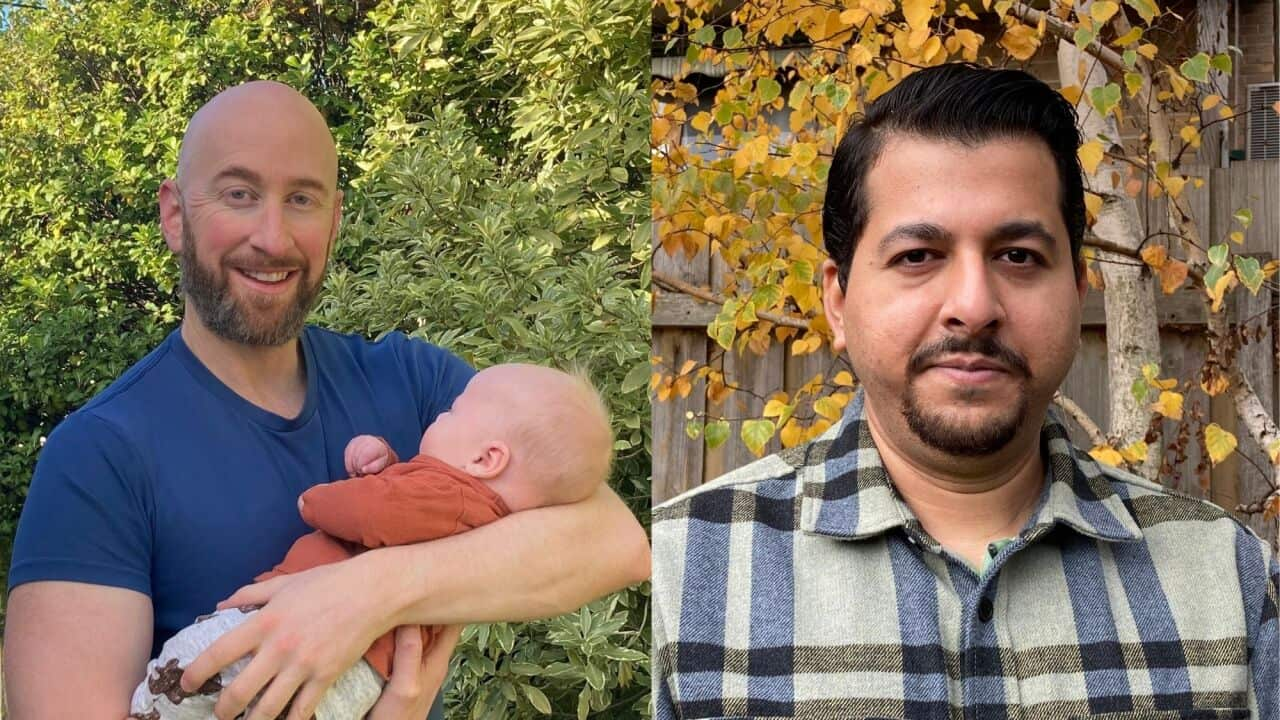Dateline follows France's first uterus transplant. Watch the episode 'Miracle Birth' via .
Déborah Berlioz and her daughter Misha share a bond that hardly seems possible; they were born from the same womb.
At the age of 17, Déborah discovered she was born without a uterus, and was told she would never be able to carry a pregnancy.
Yet in 2020, she fell pregnant following a radical procedure which transplanted the healthy uterus of her mother into her wombless body.
“What she [did was] huge,” Déborah said.
“She [did] it for me.”

Déborah and her mother, Brigitte.
It was once unthinkable that a person with the condition could ever carry a pregnancy, but medical advances mean it’s now possible. Déborah’s mother afforded her the opportunity by donating her own uterus.
“I had always said if it's possible I'll give you my uterus but at the time it wasn't done,” Brigitte Mikolajczyk, Déborah’s mother, said.

Brigitte Mikolajczyk and her partner waiting ahead of surgery.
Déborah describes her mother’s donation as “the most beautiful gesture of love” she has ever received.
“I’m touched because each person has their own way of expressing their feelings, their love.
“It’s the most beautiful gift she’s ever given me.
“After giving me life."
Hope reimagined
Professor Mats Brännström from the University of Gothenburg in Sweden pioneered the world’s first uterus transplant that produced a live birth in 2014. The womb was donated by a 61-year-old friend of the woman’s family, who had experienced menopause seven years earlier.
Déborah’s miracle pregnancy was achieved by Professor Jean-Marc Ayoubi at the Foch Hospital in Suresnes who, after 10 years of research with his team, was able to make a uterus transplant in his jurisdiction possible.
I had always said if it's possible I'll give you my uterus but at the time it wasn't done.Brigitte Mikolajczyk
Déborah and Brigitte were selected from more than 250 submissions, and the Foch Hospital foundation covered all medical costs.
“To see this patient so hopeful, so optimistic, so enthusiastic, which can be seen in her eyes, it gives us a lesson in courage and patience,” Professor Ayoubi said.
“There is hope.”
The significance of this advancement to women with disorders such as MRKH in France is that it opens the door to the possibility of having a biological child in their home country. Surrogacy was banned following France’s Bioethics Act of 1994, forcing couples to seek surrogacy programs elsewhere.

Déborah and her partner Pierre in the operating theatre during the birth of their baby, Misha.
After 16 hours of surgery, Déborah’s blood flowed into her mother’s uterus.
“The human body is incredible,” she said.
“I made this organ mine.”
To see this patient so hopeful, so optimistic, so enthusiastic, which can be seen in her eyes, it gives us a lesson in courage and patience.Professor Jean-Marc Ayoubi
The donation of a uterus fosters a unique relationship between women who have passed childbearing age, and younger women who yearn for a child they cannot carry. In cases like Déborah’s, it can also involve closest family members in the process.
“I don’t know if it’s the courage of a mother for her child,” Brigitte said awaiting her donor retrieval surgery.
“[It seems] normal, natural.”

Misha is the first baby in France born from a uterus not belonging to their birth giver.
Last month, NSW woman Kirsty Bryant became the first person in Australia to undergo a uterus transplant, performed as part of a research trial at The Royal Hospital for Women in Sydney.
How a uterus transplant works
Déborah and her mother were chosen for their immunological compatibility, good health and psychological stability. But even with the right candidates, uterus transplants are still rare, cost an average of €75,000 ($120,000) with no guarantee of success, and involve a number of tedious procedures.
First, a donated uterus must be surgically removed from a suitable donor and transplanted into a recipient.

Déborah, Pierre, Professor Jean-Marc Ayoubi and Misha.
Pre-operative hormone treatment is required to optimise the condition of the womb for a donor who has reached or passed menopause.
Hormones are then used to stimulate menstruation in the recipient. Once the new uterus has been accepted, an IVF embryo is implanted. Following successful implantation and the healthy development of an embryo, the baby is delivered though a caesarean section.
“I can't imagine my uterus inside you,” Brigitte said after Deborah’s successful transplantation surgery.
“In any case, my job is over. It's up to you now."
The human body is incredible. I made this organ mine.Déborah Berlioz
Both Déborah and Brigitte recognise their privilege.
“We're lucky,” Brigitte said.
“We're the first ones on the protocol, there are some who would have liked to be here.
“But it will give hope to other women, that's the good thing."
A second miracle
The initial protocol provided for a single child to be carried in, and born from, a transplanted uterus. But after the promising results of the pioneering Swedish team, it has evolved to allow two pregnancies in five years.
Déborah gave birth to her second child on February 17, again with Brigitte’s donated uterus. A healthy little girl named Maxine.
Professor Ayoubi’s team also succeeded in performing a uterus transplant on a wombless patient for the second time in September of last year. The transplant on the 36-year-old was performed using the uterus of her older sister.




